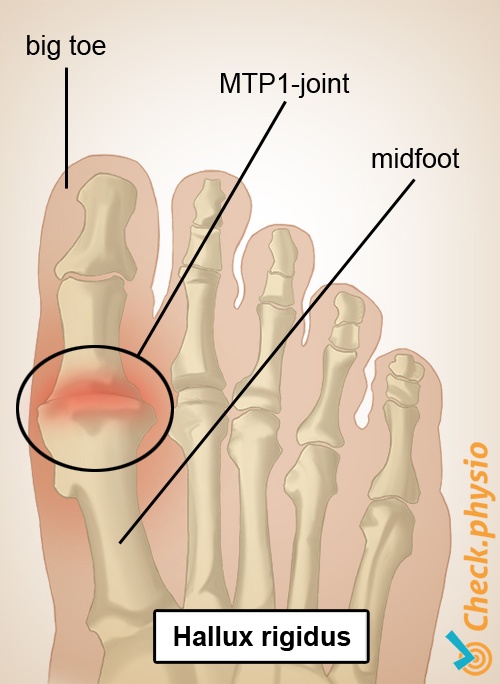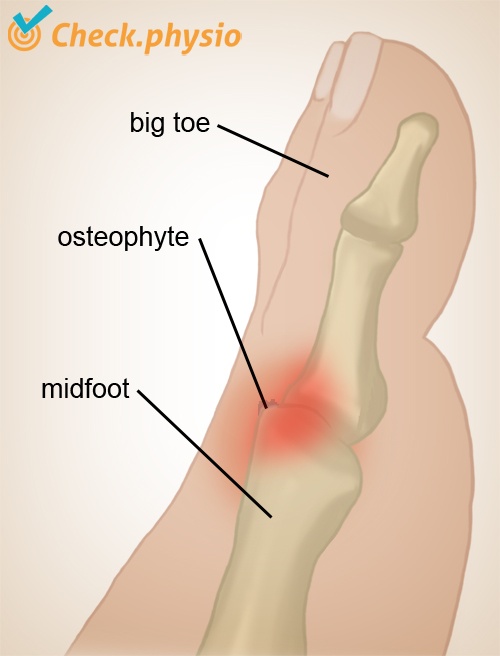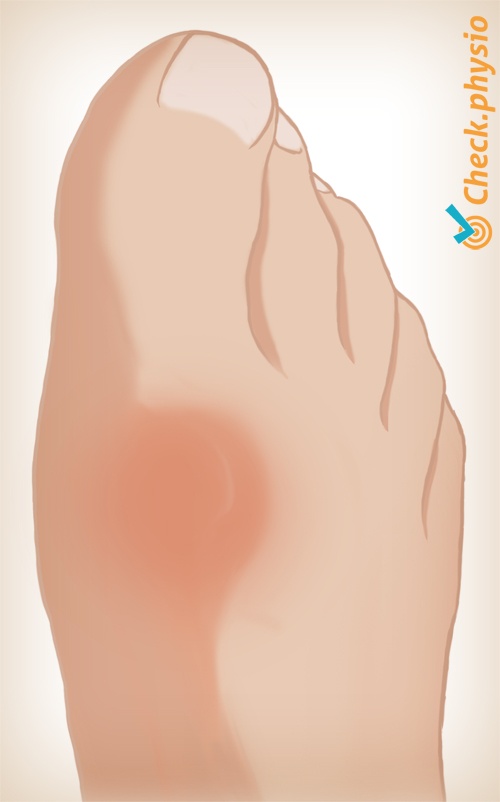- Conditions
- Hallux rigidus
Hallux rigidus Stiff big toe
Introduction
Hallux rigidus is a condition in which the big toe is less mobile and feels stiff. The pain is located primarily on the upper side of the base of the big toe. If symptoms persist for a lengthy period, a hard lump can develop above the big toe.
Although the symptoms of hallux rigidus usually occur in patients over the age of 50 as a result of osteoarthritis, the symptoms can also occur in young adults. In these cases the cause is often a sporting injury.

Description of condition
This involves a painful loss of mobility in the base joint of the big toe (MTP-1 or metatarso-phalangeal-1 joint). This is the joint that is located between the midfoot and the big toe. If the symptoms persist, a lump can develop on the top of the big toe. This is a bony growth on the bone and is also referred to as an "osteophyte".
Normally, hallux rigidus does not cause an abnormal position of the big toe, as does hallux valgus.
Cause and history
The symptoms are more common in men than in women. In adults, hallux rigidus is usually caused by osteoarthritis (wear-and-tear of the joint cartilage). The symptoms may also be caused by an accident or fall, sports injury, osteochondritis dissecans (a condition in which the cartilage and the underlying bone both separate from the joint surface), recurrent episodes of gout, hypermobility or an abnormality of the metatarsal bone.
Signs & symptoms
- Pain around the big toe joint, particularly along the upper side.
- The big toe feels stiff and is less mobile.
- Pain when extending the big toe (lifting the toe upward).
- A lump may be visible on the big toe.
- Sometimes the big toe is swollen.
- The pain occurs while walking and people tend to walk on the outside of the foot to avoid the pain.
Diagnosis
The healthcare professional will ask about the complaints and how they arose in an interview. During the physical examination, the walking pattern and mobility of the toe are examined. A possible X-ray shows if the bones have already fused together.
Treatment and recovery
Treatment can consist of modifications to footwear. A wide shoe with a rigid sole is recommended. Placing insoles in the shoes or a rigid Morton's extension under the sole may alleviate pressure on the big toe. The use of anti-inflammatory medication is sometimes useful. In severe cases, a surgical procedure may be considered.
More info
You can check your symptoms using the online physiotherapy check or make an appointment with a physiotherapy practice in your locality.
References
Verhaar, J.A.N. & Linden, A.J. van der (2005) Orthopedie Houten: Bohn Stafleu van Loghum.
Schreuder, H.W.B. (2007) De voet. De basis voor staan en gaan Nijmegen: Thieme.


